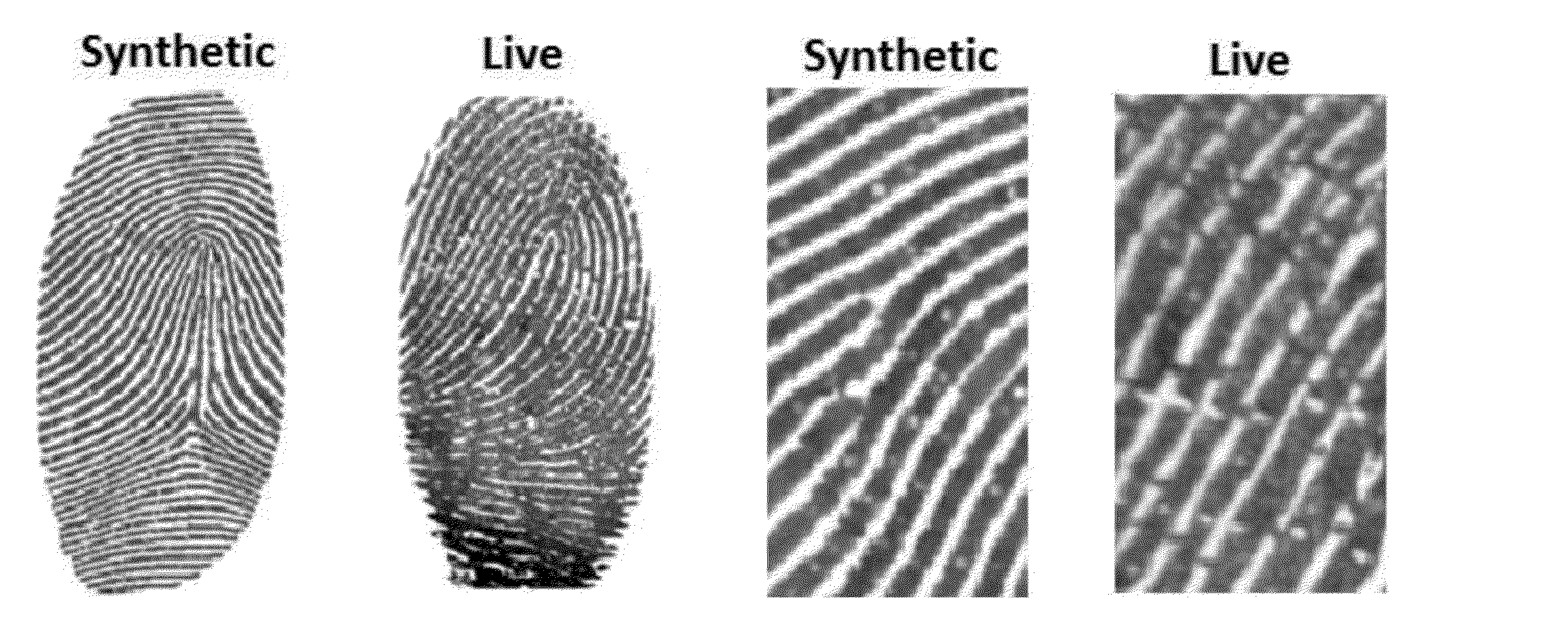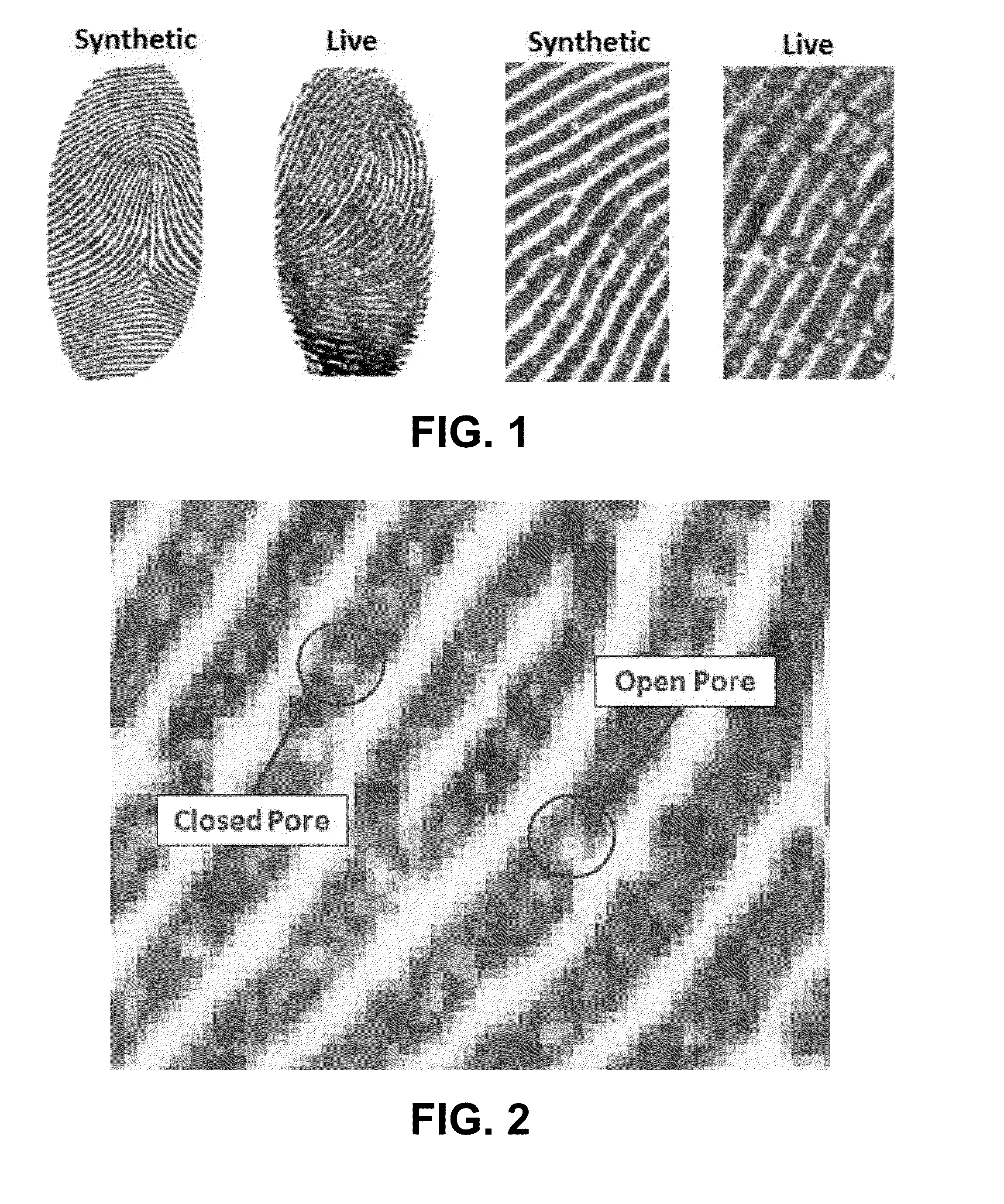Fingerprint pore analysis for liveness detection
a fingerprint pore and liveness technology, applied in the field of fingerprint pore analysis for liveness detection, can solve the problems of various threats to the fingerprint sensor system, and achieve the effect of reducing the number of false positives
- Summary
- Abstract
- Description
- Claims
- Application Information
AI Technical Summary
Benefits of technology
Problems solved by technology
Method used
Image
Examples
Embodiment Construction
[0021]Disclosed herein are various examples related to fingerprint pore analysis for liveness detection. Reference will now be made in detail to the description of the embodiments as illustrated in the drawings, wherein like reference numbers indicate like parts throughout the several views.
[0022]Biometric systems are emerging technologies that enable the identification and verification of an individual based upon physiological or behavioral characteristics. Biometric identifiers are replacing traditional identifiers, as it is difficult to steal, replace, forget or transfer them. Fingerprint recognition systems (FRS) are among the oldest and most popular biometric authentication systems. Automatic fingerprint matching involves determining the degree of similarity between two fingerprint impressions by comparing their ridge structures and / or the spatial distributions of their minutiae points. Latent fingerprint identification relies on three levels of feature detail: (1) ridge image ...
PUM
 Login to View More
Login to View More Abstract
Description
Claims
Application Information
 Login to View More
Login to View More - R&D
- Intellectual Property
- Life Sciences
- Materials
- Tech Scout
- Unparalleled Data Quality
- Higher Quality Content
- 60% Fewer Hallucinations
Browse by: Latest US Patents, China's latest patents, Technical Efficacy Thesaurus, Application Domain, Technology Topic, Popular Technical Reports.
© 2025 PatSnap. All rights reserved.Legal|Privacy policy|Modern Slavery Act Transparency Statement|Sitemap|About US| Contact US: help@patsnap.com



